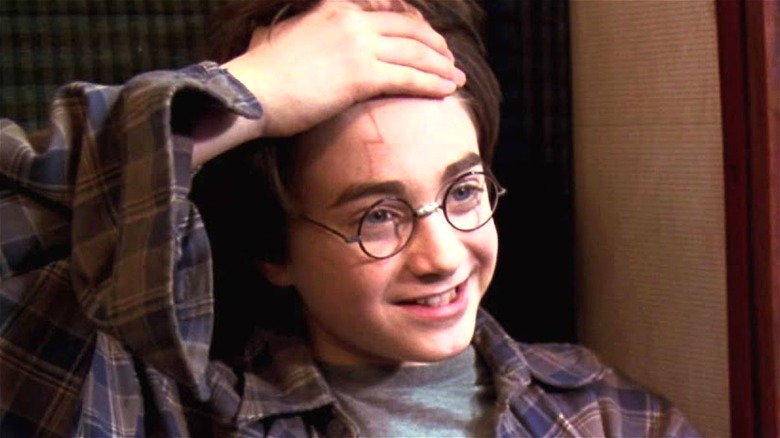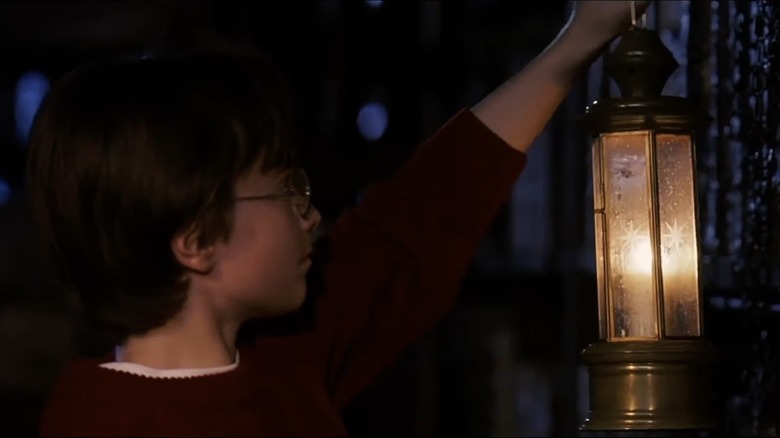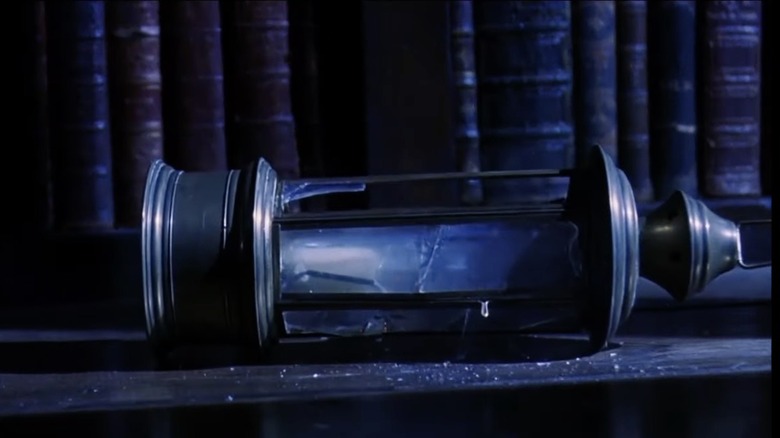How The Harry Potter Movies Got Around This Major Rule
The "Harry Potter" franchise is well-known for the impressive combination of CGI, detailed set designs, and real-life filming locations that brought the Wizarding World to magical life during the course of eight movies. Some of the filming locations in the U.K. included King's Cross station in London, Alnwick Castle in northeast England, Gloucester Cathedral near Bath, Lacock Abbey in Wiltshire, and Glen Coe in the Scottish Highlands.
Among the storied locations where the movies were filmed is Oxford University, which Rick Steves says stood in for many different parts of Hogwarts, including the school's infirmary and a prominent castle stairway. Oxford's Great Hall of Christ Church College also served as inspiration for Hogwarts' Great Hall, though those scenes were actually filmed on a set at the Leavesden studios.
Oxford is also home to the Restricted Section of Hogwarts' library. In real life, it's Duke Humfrey's Library inside the iconic Bodleian Library. Had they filmed the scene without using special effects, they would have violated the library's centuries-old, sacrosanct oath. Thankfully, unlike Harry himself, they didn't break any rules.
Filming at the Bodleian Library comes with certain rules
The Bodleian Library's Tumblr site says, "The Hogwarts Restricted Section is actually the Arts End of the medieval Duke Humfrey's Library, the oldest reading room at the Bodleian. In 'The Philosopher's Stone' [the U.K. title for 'The Sorcerer's Stone'] students require a note to consult books in this section, just like they do at the Bodleian; readers have been swearing Bodley's oath for centuries."
The site goes on to say that the Oxford University library really did chain books to the shelves, just like the Restricted Section of the Hogwarts Library, to stop people from "nicking all of our precious books." Today, there's an electronic alarm system to prevent theft.
Bodley's oath, as posted by the library, states, "I hereby undertake not to remove from the Library, or to mark, deface, or injure in any way, any volume, document, or other object belonging to it or in its custody; not to bring into the Library or kindle therein any fire or flame, and not to smoke in the library; and I promise to obey all rules of the Library."
The library says that all readers must swear the oath, which has been translated into more than 100 languages and is printed on merchandise offered inside the Bodleian gift shop. (Eid you doubt there was one?)
The lantern flame was a CGI effect
You'll notice that one of the rules listed involves the prohibition of any kind of fire, even though the scene in "Harry Potter and the Sorcerer's Stone," features Harry going into the library using his Invisibility Cloak, lit lantern in hand. When he hears caretaker Argus Filch calling out, he accidentally knocks over and breaks the lantern — thankfully, extinguishing the flame. In real life, a fire caused by such an incident is exactly the kind of danger Bodley's oath has been guarding against since it was instituted.
Some sources (including IMDb.com) have spread the word that the producers of the "Harry Potter" movies were able to break Bodley's oath for that scene. They claimed that producers asked special permission to bring fire into the space, becoming the first to be allowed to do so in hundreds of years. However, a tweet from the library debunks that idea completely. "Just saw some 'fake news' on Tumblr. In truth, Harry Potter's lantern is a little bit of computer graphics magic," @bodleianlibs, the official Library Twitter account, posted in 2017.
One user questioned the information, pointing out that he'd heard from a Bodleian tour guide that the flame was real. To which @bodleianlibs said, "While it's impossible to know what happened with your guide, I can confirm with 100% certainty that it's not a real flame in the film." User @fierengraw replied that this was a reassuring fact; true bibliophiles (perhaps still traumatized by the fire at the Library of Alexandria), will be happy to know that no books were put in danger by the movie production.


